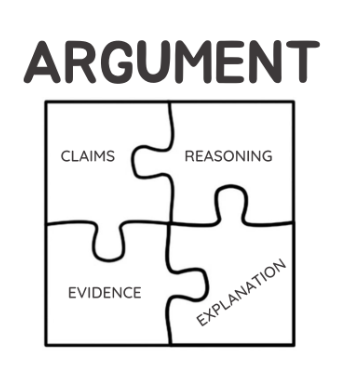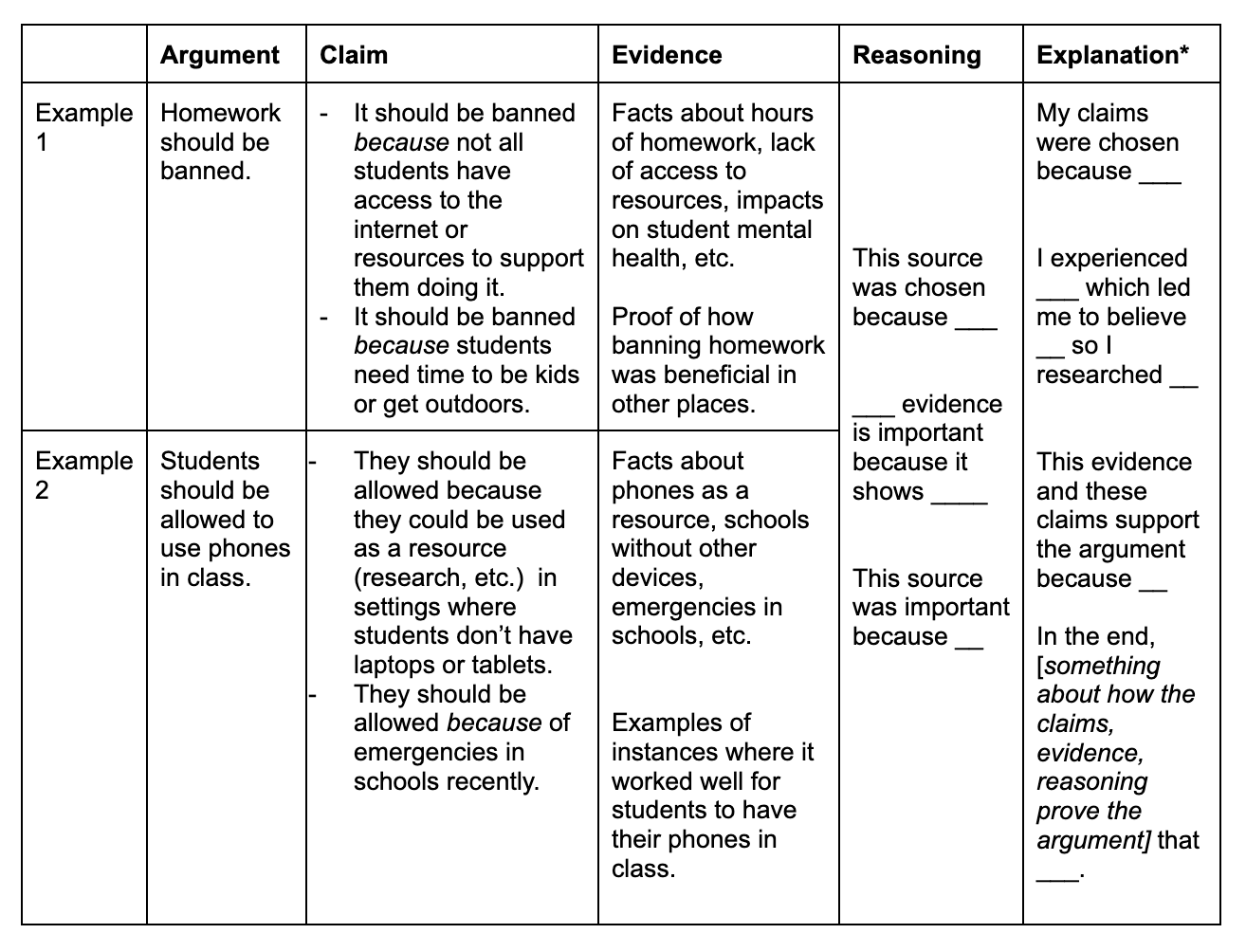When learning about argumentative writing, my students regularly freeze. The terms claim, reasoning, evidence, and explanation all appear to be the same. They are unsure where to start and where to end. So let’s break it down together.
What is an argument?
An argument is the central topic, stance or response to a question that a writer is trying to answer or argue for.

Claim, reasoning, evidence, and explanation are the puzzle pieces that work together to prove or unpack this argument.
What is a claim?
Claims help answer the stance or question. They are the mini-arguments that share the purpose of the bigger argument. Generally, I encourage students to think about claims as “their position + because…” and to come up with 2-4 claims. These claims could eventually make up the body paragraphs of their essays.
In other words, a claim is a mini reason the argument is true and why that is the case.
Note that thinking about counterclaims (or mini reasons for arguments against a writer’s own argument) is a really strong way to be able to address counterarguments when the writing or assignment calls for this.
What is evidence?
Evidence is the facts (sources could be numbers/data, books/writing, quotes, etc). These pieces are important because they prove or disprove the argument. Good evidence is what differentiates strong claims and arguments from weak ones.
What is reasoning?
Reasoning is all about choices. It is the thinking behind the evidence that leads to the claim, comparing evidence to what we already know and analyzing the influences of setting or characters on the argument. Reasoning tells us:
- Why did the author choose certain evidence to support the claims or argument?
- Why did the author choose one source over another?
What is an explanation?
Explanation is similar to reasoning as it can also be explaining why evidence is chosen. Explanation is different, however, in that it also makes clear why claims or reasoning were chosen. Generally, I remind students that explanation is about making sense for the audience and is a writer’s opportunity to tell the full story or to share their thinking out loud.
Let’s put it into practice!
Here are two brief examples which help show the differences in the 5 terms.

*The explanations above are written in first person. Double check the tense your teacher wants the paper in. If they are asking for third person, you would not want to use I, me, my, our, we, etc.


Comments